With the opening of registration qualifications for the parachains of the Rococo testnet, the auction of Polkadot and Kusama parachains has gradually kicked off. At that time, users can use DOT and KSM to vote for the supported projects to help them participate in the auction. In anticipation of slot auctions, Polkadot token (DOT) and its canary testnet Kusama token (KSM) have performed strongly in the past six months, becoming one of the most dazzling protagonists in the market. As of January 14, 2021, the price of Polkadot has exceeded $12, and its market value has exceeded $10.8 billion.Polkadot, as a cross-chain underlying project and a next-generation blockchain protocol, has gained too much halo in 2020. The development process of the Polkadot test network is smooth, and the ecological projects are rising rapidly, sounding the clarion call of the new generation of blockchain. According to the Polkaproject website, there are 337 Polkadot ecological projects, covering infrastructure, wallets, stablecoins, browsers, games, DeFi, DApps and other aspects.So, what are the values and projects worthy of attention in the Polkadot blockchain ecology? The OKEx Intelligence Agency has selected some well-known projects for sorting and inventory. This article will focus on the following projects (in no particular order).Polkadot is a blockchain project created by Gavin Wood (Lin Jiawen), the former CTO of Ethereum, in 2015 and started to be developed by Parity Technology in November 2017. According to Gavin Wood's description in the white paper, Polkadot is a blockchain protocol designed to support "parachains created by various developers." Simply put, Polkadot is a collection of blockchains composed of multiple blockchains heterogeneously. The main purpose of Polkadot is to connect the current independent blockchains. Through Polkadot, communication and data transfer can be carried out between different blockchains.Kusama is Polkadot's first testnet. Project parties and developers can develop and deploy parachains in this real environment, or try Polkadot's governance, pledge (mortgage), nomination and verification functions. Kusama aims to help everyone understand how technologies in cutting-edge areas such as governance, staking, and sharding work in a real economic environment.ChainX is an ecological chain created based on substrate. It is mainly responsible for the asset management applications of the Polkadot ecosystem. In the early stage of testing the asset cross-chain transfer bridge technology, it is committed to realizing message (information) between Bitcoin, ERC20 network and Polkadot network. , assets) cross-chain. The technical architecture of existing blockchain projects (such as ETH, EOS, etc.) is not compatible with the Polkadot protocol. ChainX will standardize these digital assets and then import them into the Polkadot ecosystem through the standard Polkadot protocol.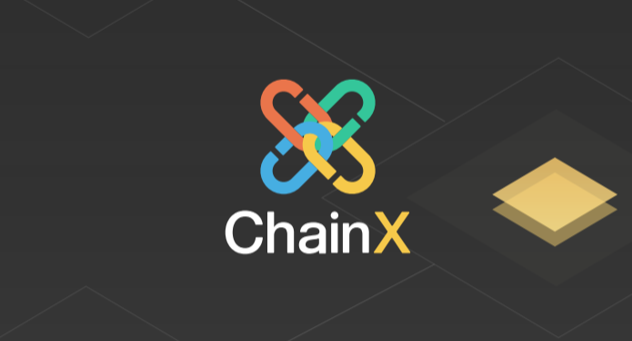 Acala is a decentralized ecological financial center and stable currency platform, which aims to create an open financial framework in conjunction with the Polkadot ecosystem, bringing financial stability, liquidity and accessibility to global encrypted assets. Acala Network has launched core Layer 1 modules such as the cross-chain multi-asset mortgage stablecoin Honzon protocol, releasing Staking, asset liquidity Homa protocol, and decentralized exchanges, including stablecoin generation, DEX, liquidity solutions, etc. business section.Its stable currency asset aUSD1:1 is anchored to USD, which is over-supported by certain encrypted assets. The collateral can be local Polkadot assets, such as DOT, or other assets, such as cross-chain bridges of assets such as BTC and ETH Mortgage in the Polkadot network to obtain aUSD. The liquidity release business is to provide liquidity release services for Staking's DOT and KSM, and the corresponding tokens generated are LDOT/LKSM.
Acala is a decentralized ecological financial center and stable currency platform, which aims to create an open financial framework in conjunction with the Polkadot ecosystem, bringing financial stability, liquidity and accessibility to global encrypted assets. Acala Network has launched core Layer 1 modules such as the cross-chain multi-asset mortgage stablecoin Honzon protocol, releasing Staking, asset liquidity Homa protocol, and decentralized exchanges, including stablecoin generation, DEX, liquidity solutions, etc. business section.Its stable currency asset aUSD1:1 is anchored to USD, which is over-supported by certain encrypted assets. The collateral can be local Polkadot assets, such as DOT, or other assets, such as cross-chain bridges of assets such as BTC and ETH Mortgage in the Polkadot network to obtain aUSD. The liquidity release business is to provide liquidity release services for Staking's DOT and KSM, and the corresponding tokens generated are LDOT/LKSM.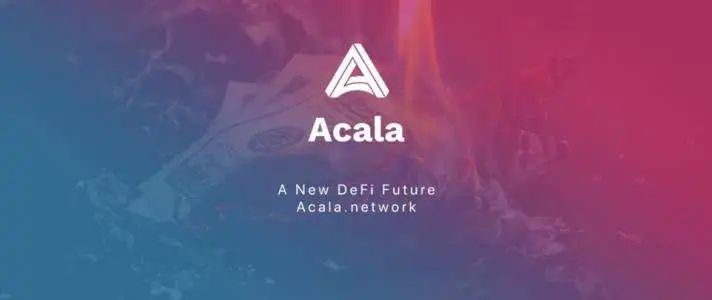 Crust Network is a distributed cloud project based on the Polkadot parachain, aiming to build a distributed cloud ecosystem that values data privacy and ownership. Crust implements the incentive layer protocol for decentralized storage, adapts to various storage layer protocols including IPFS and FastDFS, and provides support for the application layer. Crust's Meaningful Proof of Work (MPoW) uses Trusted Execution Environment (TEE) technology to reliably prove a node's storage workload. Crust's Secured Proof of Stake consensus (GPoS) is a PoS consensus that adds a guarantee mechanism.
Crust Network is a distributed cloud project based on the Polkadot parachain, aiming to build a distributed cloud ecosystem that values data privacy and ownership. Crust implements the incentive layer protocol for decentralized storage, adapts to various storage layer protocols including IPFS and FastDFS, and provides support for the application layer. Crust's Meaningful Proof of Work (MPoW) uses Trusted Execution Environment (TEE) technology to reliably prove a node's storage workload. Crust's Secured Proof of Stake consensus (GPoS) is a PoS consensus that adds a guarantee mechanism.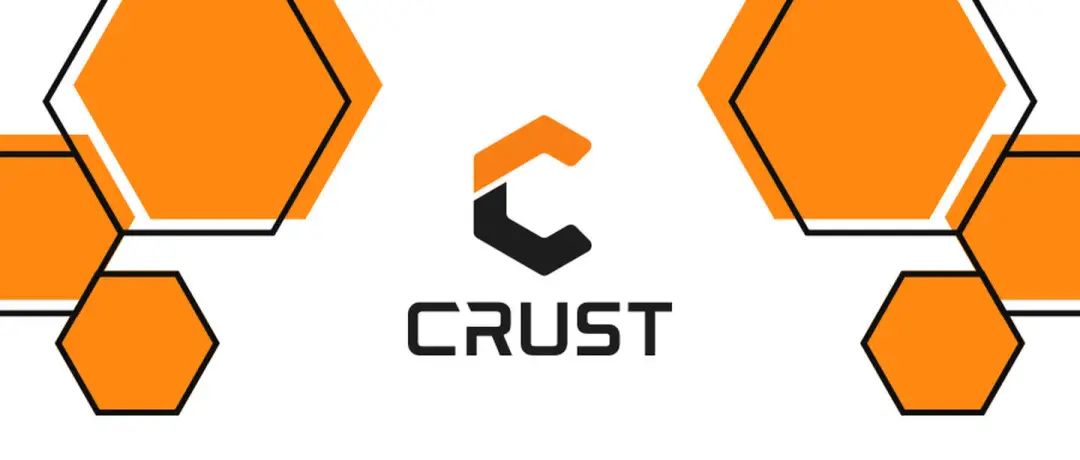 Based on Substrate and Polkadot ecology, Phala Network implements confidential smart contracts through the TEE-blockchain fusion architecture, and can build a privacy network that can interact across chains. It aims to become a Web3.0 privacy protection infrastructure, and the goal is to serve enterprises Provide confidential computing and data protection services to users. It is based on a PoW-like economic incentive model. Phala releases the privacy computing power of countless CPUs and applies it to the Polkadot parallel chain, thereby serving other applications such as Defi and data services on Polkadot. The Phala-based applications pLibra and Web3 Analytics have received the Web3 Foundation grant.
Based on Substrate and Polkadot ecology, Phala Network implements confidential smart contracts through the TEE-blockchain fusion architecture, and can build a privacy network that can interact across chains. It aims to become a Web3.0 privacy protection infrastructure, and the goal is to serve enterprises Provide confidential computing and data protection services to users. It is based on a PoW-like economic incentive model. Phala releases the privacy computing power of countless CPUs and applies it to the Polkadot parallel chain, thereby serving other applications such as Defi and data services on Polkadot. The Phala-based applications pLibra and Web3 Analytics have received the Web3 Foundation grant.
Darwinia is an open heterogeneous cross-chain bridge protocol based on Substrate in the Polkadot ecosystem, connecting Polkadot, Ethereum, Tron and other heterogeneous chains, and is committed to realizing message cross-chain between Polkadot network and Polkadot external network. The main application areas include Defi, cross-chain NFT trading market, games, etc. At present, Darwinia has realized the one-way cross-chain support from Ethereum to the Darwinia main network.Through the Darwin network, blockchain games or Dapps can easily carry out cross-chain interaction of game assets and game operations through the Darwin network. For example, the Obsessed Cat game on Ethereum can transform the NFT on Ethereum through the Darwin chain: Obsessed Cats Become an obsessed cat on EOS; players on Ethereum and players on EOS can play the evolution Odaily game at the same time through the Darwin network. At the same time, thanks to the Polkadot ecology, the Darwin network can link a wider range of games and players.Litentry is a decentralized cross-chain identity protocol based on the Polkadot ecosystem. It provides refined on-chain identity credit services for applications inside and outside the Polkadot ecosystem, such as DeFi and on-chain governance. The trusted decentralized identity aggregator has become an important infrastructure in the Web 3.0 network, ready for large-scale application landing.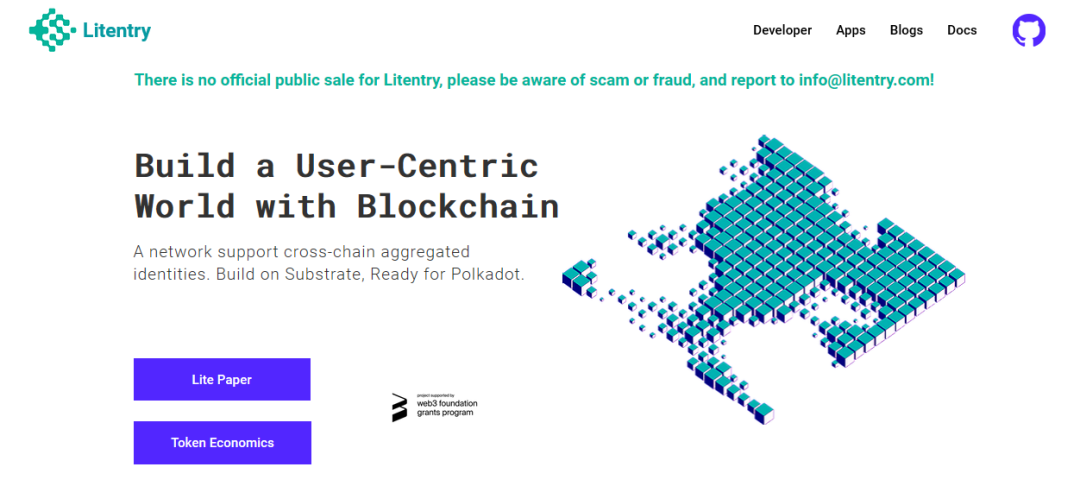 Bifrost is the basic protocol of Polkadot's ecological DeFi, and is committed to becoming the infrastructure for pledged assets to provide liquidity. Currently, it has launched vToken, a derivative product for Staking and Polkadot's parachain card slot PLO. vToken can be used in multiple scenarios such as DeFi, DApp, DEX, and CEX. Optimize the transaction, realize the transfer channel of pledge rights such as Staking and PLO through vToken, and realize the risk hedging of pledged assets. In the expansion scenario, such as when vToken is used as collateral for lending, its Staking income can offset part of the interest and realize low-interest lending. Bifrost has currently received $600,000 in seed round financing from NGC, SNZ and other institutions, as well as the Web3 Foundation Grant, and is also a member of the Substrate Builders Program and Web3 Bootcamp.
Bifrost is the basic protocol of Polkadot's ecological DeFi, and is committed to becoming the infrastructure for pledged assets to provide liquidity. Currently, it has launched vToken, a derivative product for Staking and Polkadot's parachain card slot PLO. vToken can be used in multiple scenarios such as DeFi, DApp, DEX, and CEX. Optimize the transaction, realize the transfer channel of pledge rights such as Staking and PLO through vToken, and realize the risk hedging of pledged assets. In the expansion scenario, such as when vToken is used as collateral for lending, its Staking income can offset part of the interest and realize low-interest lending. Bifrost has currently received $600,000 in seed round financing from NGC, SNZ and other institutions, as well as the Web3 Foundation Grant, and is also a member of the Substrate Builders Program and Web3 Bootcamp.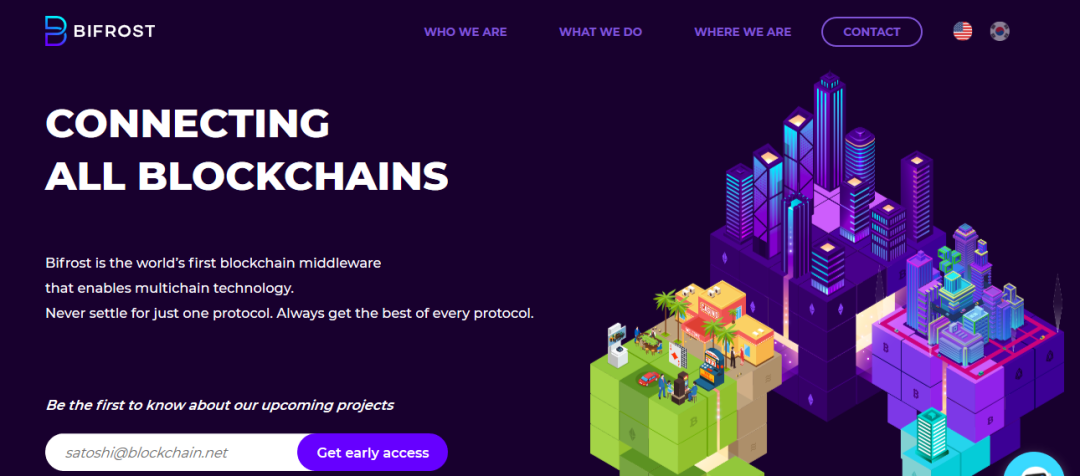 Stafi is a DeFi protocol that provides liquidity solutions for Staking assets. Users can obtain rToken derivatives through Staking PoS Token on Stafi, such as rDOT, rXTZ, etc. rToken represents the reward right for Staking locked assets, and there is no need to wait Unlock time to trade locked assets directly.Edgeware is committed to creating a fair distribution, POS consensus-based WebAssembly smart contract platform, which is also the first smart contract chain in the Polkadot ecosystem (Polkadot's parachain).Zenlink is a cross-chain decentralized trading network based on Polkadot, dedicated to building a new generation of cross-chain DEX network. Zenlink itself does not need to bid for Polkadot parachain slots. By integrating the Zenlink DEX Module on the parachain, the Polkadot parachain quickly has DEX capabilities and can share liquidity with other parachains, and the Zenlink DEX aggregator All DEX DApps on Polkadot can be linked.Plasm Network is a scalable dApps platform based on Substrate, which can be used as a parallel chain of Polkadot in the future. Developers can build any application on the Plasm network without having to worry about scalability.Polkastarter is a cross-chain DEX protocol on Polkadot. It is specially established for cross-chain token pools and auctions, allowing decentralized projects to raise and trade funds in a low-cost and fast manner, including auctions, secure OTC transactions, etc. aspect. Polkastarter will also have full KYC integration, provide cross-chain, priced block transactions and dynamic price auctions, and support digital assets other than commonly used ERC20.Subsocial is a decentralized social network open platform built on Substrate and IPFS, which is upgradable (Substrate) and censorship-resistant (IPFS), and allows its users to use any cryptocurrency supported by the Polkadot ecosystem. Users can think of Subsocial as a decentralized version of reddit or Medium, where Subreddit and Blog run on their own chains. Subsocial is supported by the Web3 Foundation Grant and is one of the first 17 projects carefully selected by Parity to participate in the Substrate Builders Program.
Stafi is a DeFi protocol that provides liquidity solutions for Staking assets. Users can obtain rToken derivatives through Staking PoS Token on Stafi, such as rDOT, rXTZ, etc. rToken represents the reward right for Staking locked assets, and there is no need to wait Unlock time to trade locked assets directly.Edgeware is committed to creating a fair distribution, POS consensus-based WebAssembly smart contract platform, which is also the first smart contract chain in the Polkadot ecosystem (Polkadot's parachain).Zenlink is a cross-chain decentralized trading network based on Polkadot, dedicated to building a new generation of cross-chain DEX network. Zenlink itself does not need to bid for Polkadot parachain slots. By integrating the Zenlink DEX Module on the parachain, the Polkadot parachain quickly has DEX capabilities and can share liquidity with other parachains, and the Zenlink DEX aggregator All DEX DApps on Polkadot can be linked.Plasm Network is a scalable dApps platform based on Substrate, which can be used as a parallel chain of Polkadot in the future. Developers can build any application on the Plasm network without having to worry about scalability.Polkastarter is a cross-chain DEX protocol on Polkadot. It is specially established for cross-chain token pools and auctions, allowing decentralized projects to raise and trade funds in a low-cost and fast manner, including auctions, secure OTC transactions, etc. aspect. Polkastarter will also have full KYC integration, provide cross-chain, priced block transactions and dynamic price auctions, and support digital assets other than commonly used ERC20.Subsocial is a decentralized social network open platform built on Substrate and IPFS, which is upgradable (Substrate) and censorship-resistant (IPFS), and allows its users to use any cryptocurrency supported by the Polkadot ecosystem. Users can think of Subsocial as a decentralized version of reddit or Medium, where Subreddit and Blog run on their own chains. Subsocial is supported by the Web3 Foundation Grant and is one of the first 17 projects carefully selected by Parity to participate in the Substrate Builders Program.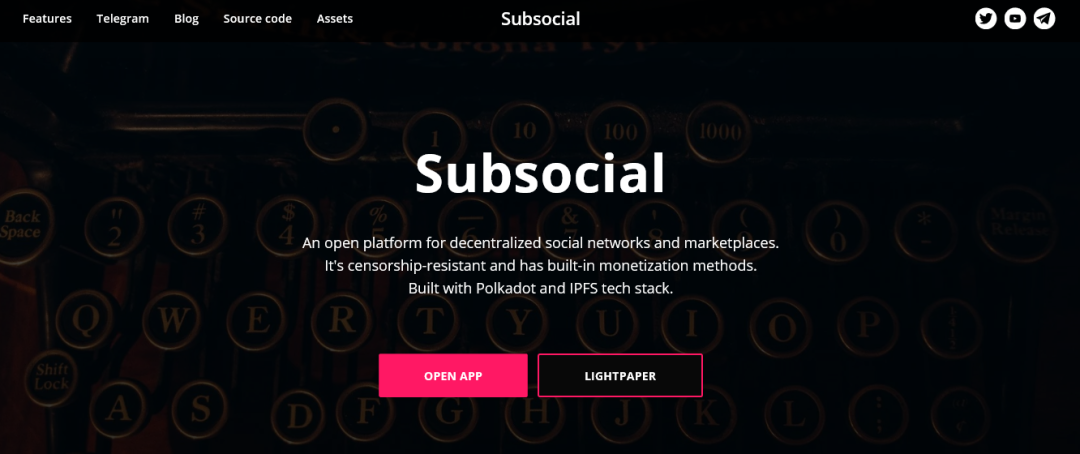 A community based on Subsocial can issue its own tokens so that users of the community can jointly own and participate in the governance of the community.Ocean Protocol is a decentralized data exchange protocol designed to unlock data and provide fairer outcomes for data users. Ocean Protocol allows data providers to interact with data consumers through a decentralized data marketplace while guaranteeing control, auditability, transparency and compliance for all participants.Rio DeFi is creating the technical infrastructure for a new decentralized financial system powered by blockchain and smart contracts. At the heart of this technology stack is Rio Chain, which supports an ecosystem of decentralized financial applications. An adaptive digital platform tailored for mass adoption. Rio DeFi aims to bring blockchain technology to the masses by prioritizing adoption, performance, scalability and ease of use.KILT is a fat protocol based on blockchain, which can be used for the issuance, storage and maintenance of verifiable digital certificates, and supports privacy protection functions such as anonymous verification. Its design uses Substrate blockchain technology. The KILT protocol comes with a simple JavaScript SDK that makes it possible to build useful applications without requiring any blockchain development skills.At present, there are more and more Polkadot ecological projects, many of which are interested in participating in the Polkadot parachain slot auction. Currently, Rococo, the Polkadot test network, has opened the parachain test qualification registration. Ecological agreements have participated in the parachain registration application. Next, we will usher in the Kusama parachain auction and the Polkadot parachain auction. In the long run, the Polkadot ecosystem still has the potential to explode.
A community based on Subsocial can issue its own tokens so that users of the community can jointly own and participate in the governance of the community.Ocean Protocol is a decentralized data exchange protocol designed to unlock data and provide fairer outcomes for data users. Ocean Protocol allows data providers to interact with data consumers through a decentralized data marketplace while guaranteeing control, auditability, transparency and compliance for all participants.Rio DeFi is creating the technical infrastructure for a new decentralized financial system powered by blockchain and smart contracts. At the heart of this technology stack is Rio Chain, which supports an ecosystem of decentralized financial applications. An adaptive digital platform tailored for mass adoption. Rio DeFi aims to bring blockchain technology to the masses by prioritizing adoption, performance, scalability and ease of use.KILT is a fat protocol based on blockchain, which can be used for the issuance, storage and maintenance of verifiable digital certificates, and supports privacy protection functions such as anonymous verification. Its design uses Substrate blockchain technology. The KILT protocol comes with a simple JavaScript SDK that makes it possible to build useful applications without requiring any blockchain development skills.At present, there are more and more Polkadot ecological projects, many of which are interested in participating in the Polkadot parachain slot auction. Currently, Rococo, the Polkadot test network, has opened the parachain test qualification registration. Ecological agreements have participated in the parachain registration application. Next, we will usher in the Kusama parachain auction and the Polkadot parachain auction. In the long run, the Polkadot ecosystem still has the potential to explode.
A community based on Subsocial can issue its own tokens so that users of the community can jointly own and participate in the governance of the community.